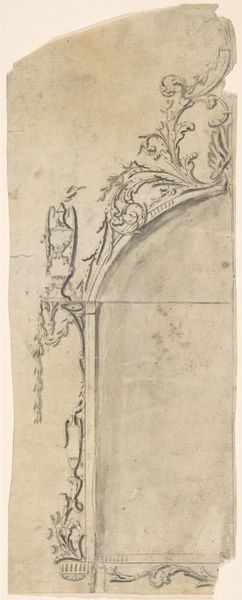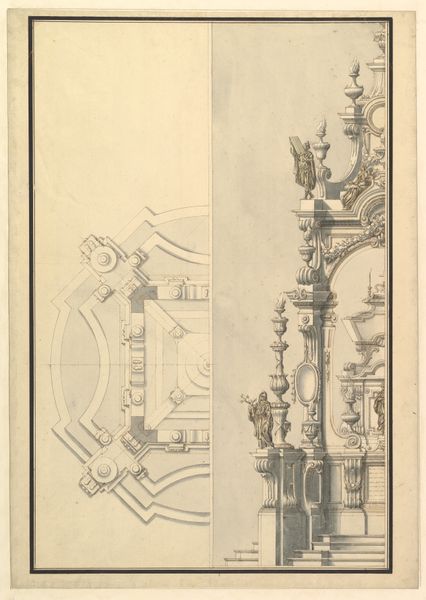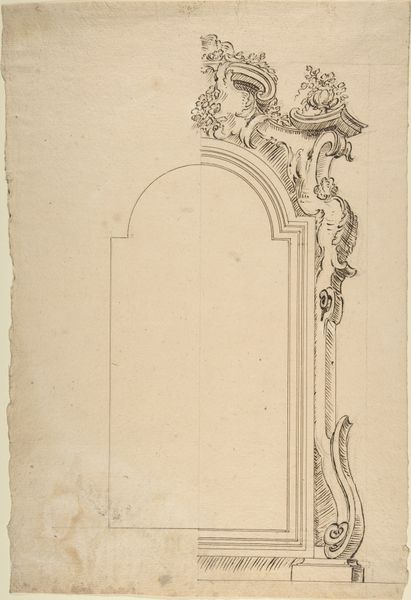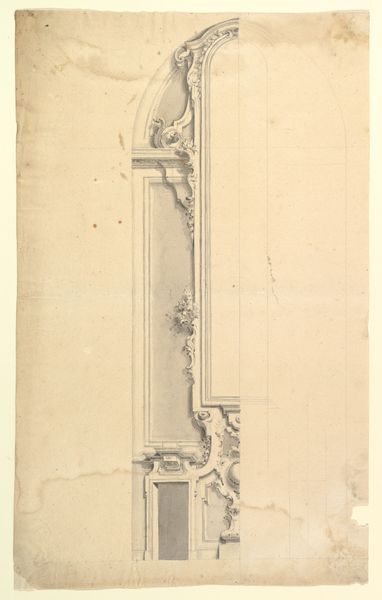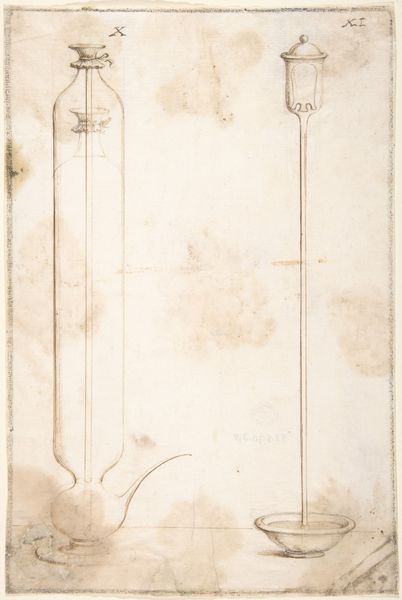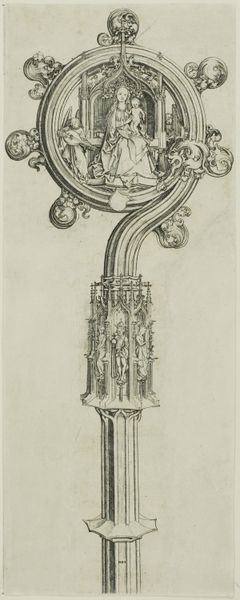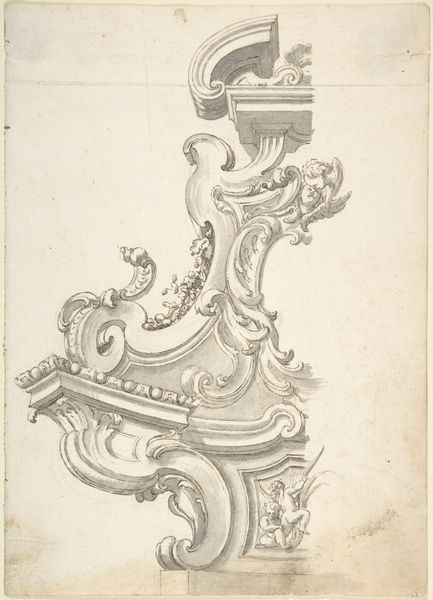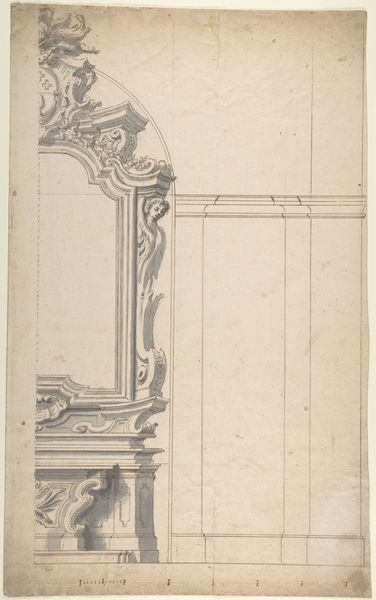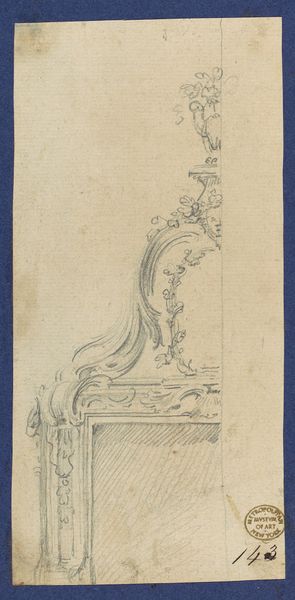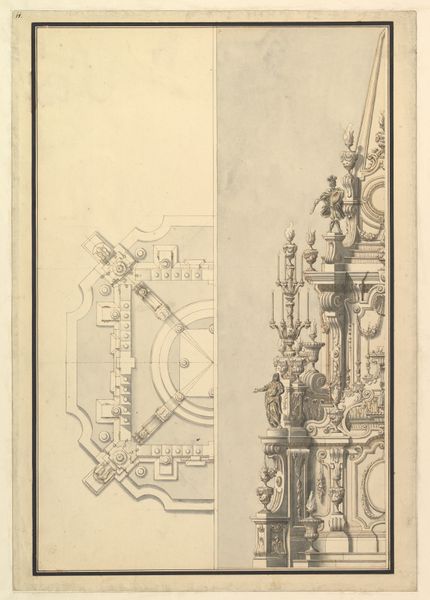
Design for the Ornamentation of a Section of a Ceiling 1700 - 1780
0:00
0:00
drawing, ink, architecture
#
drawing
#
baroque
#
ink
#
geometric
#
architecture
Dimensions: sheet: 16 1/8 x 10 3/16 in. (41 x 25.8 cm)
Copyright: Public Domain
Curator: My goodness, what a find! The “Design for the Ornamentation of a Section of a Ceiling," from the period 1700-1780. It is a drawing rendered in ink that lives at the Metropolitan Museum of Art in New York. Editor: Wow, what an exuberant explosion of geometrical delights, It looks almost as if the drawing bursts forth right into the grand scale of an extravagant baroque salon. Curator: Right? It’s more than just geometry, isn't it? This feels deeply baroque, from the overall balance, the curves of the decoration, to the rhythm established between complex form and relatively large, bare space. How do you think this ornamental explosion plays into the cultural narrative of its time? Editor: Baroque does so much! Look, we're clearly in an era when power loved to broadcast itself, right? Ceilings aren't just ceilings: they are literally the heights that a person can reach and want to see decorated according to who pays for it, mirroring power, ambition and wealth. Curator: Makes sense. There’s also a really palpable tension here—I mean, the geometric precision wrestling with those organic, flowing forms... does it speak to a wider conflict, do you think? Editor: Potentially. The tension might mirror the era's own, a society grappling with the rise of rational thought, yet clinging fiercely to tradition and ornamentation as cultural pillars. In any case, if a picture is worth a thousand words, how about a drawing? All that baroque era left behind might also come across, from our modern perspective, as an expression of futility in the face of human tragedy. Curator: Hmm, it seems more decorative and pleasing than tragic. It does however raise interesting questions about permanence and legacy. This anonymous artist pouring themselves into a design, for a ceiling decoration that outlasts them. Editor: Yes, this dance between order and wildness, practicality and opulence. Perhaps that’s what makes this piece so compelling, centuries later.
Comments
No comments
Be the first to comment and join the conversation on the ultimate creative platform.

